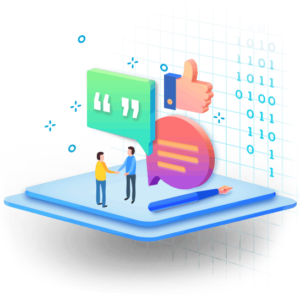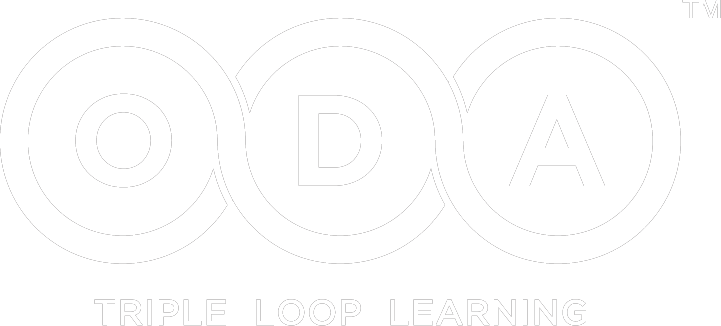- Home
- newsletter#3
- Reimagining workplace learning though Digital Learning Ecosystem
newsletter#3
An ever-changing business landscape requires deeper specialization and constant upskilling of the workforce. This is optimally achieved through an agile learning environment, which thrives best when practiced under a Digital Learning Ecosystem. The need to learn through social collaboration and day-to-day interactions means that it is no longer enough to just assign people a course or train in U-shaped classrooms.
A ‘Digital Learning Ecosystem’ is nothing, but a combination of responsible people supported by an optimal learning process and efficient development systems within organizations which interface with the external world, reinforcing positive formal and informal learning.
Ideally, in an ecological system, people have exclusive access to the content and can set their own learning pathways and methods. Though, most organisations have an unorganized approach to managing their ecosystems, limiting the capability of the system.
Therefore, it is crucial to carefully design and organize at inception, to ensure the effectiveness and organic evolution of the ecosystem.
Principle Elements of a Digital Learning Ecosystem
- People
The people that form any organization are the ones who drive that organization. Traditionally, a learning plan to develop people was put in place based solely on business objectives. In an ecosystem, this concept is turned upside-down; here, people are developing the organization through the learning plan, tailored to the pace of business.
Internal stakeholders:
- Your employees
- Communities of Practice (COPs) /Subject-Matter Experts (SMEs)
External stakeholders:
- Service providers/vendors
- Customers or Clients
- Consultants
- Network leadership or advisory board
The internal and external stakeholders will learn formally and informally through their day-to-day interactions. Since learning is on the go, content is created within your organization and presented to the wider audience within a shorter time span.
- Processes
Human resource practitioners must identify the right set of processes for organizational learning, knowledge management and transfer. Design thinking is a great way to create process maps in line with the learner journey.
Fundamental focus of the set of processes should be on how people would learn, and what resources should be deployed for this. Let us take the Sales function as an example. How would sales team interact and learn from regional and global best practices on a continual basis? How would new products be presented to sales executives?
Or, if there is a new employee who joins the team, how should he be onboarded without drowning him or her in an ocean of information? Where will they find the core documents to avoid duplication of work effort? How should they acquire skills that are significant for the team to succeed?
Key things to focus on while creating learning processes:
- Processes should address the transfer of learner behaviour
- Connected to business goals
- Cater to the learning experiences of different generations,
- Manage access to existing content for internal & external parties,
- Focus on quality control of learning content,
- Deploy specific metrics to measure learning transfer efficiency,
- Adaptable to evolving capabilities.

For a successful Digital Learning Ecosystem, people must be supported by systems and processes in equal measure.
- Systems
Technology has disrupted the learning experience, pushing traditional learning providers to look towards new-age systems that can suggest learning content from the infinite amount of available information. These systems should create engaging experiences which are experiential and fun. That means incorporating gamification, virtual reality and augmented reality into corporate learning.
Here the periphery of ‘Systems’ is not limited to technology; the definition is multifaceted.
- Organisational Social System encompasses cultural elements that create and promote social learning.
This acts as an enabler for all sub–ecosystems (digital habitats); the social system that promotes strategic themes like cross functional mentoring, shadowing, stretch assignments, leadership development and graduate programs that are central to the growth of business.
- Digital Technology System represents the technological base to promote and facilitate a successful Ecosystem. These are cloud-based or on-premises platforms that host virtual and eLearning content.
Here, ‘System’ is a series of interlinked mini-systems, each one addressing particular needs, since there is so far no one comprehensive digital system that fulfills all requirements.
Recommended Features:
- Cloud-based platforms that measure learning experience against the learning since organisations are increasingly investing in technology that helps create a better learning experience for a diverse workforce.
- Social platforms like Facebook for work, Yammer, Slack etc. to drive social collaboration in the organisation and to ensure that learning is spread across the right users.
- Integration of continuous performance management system to push competency development.
- AI powered technology platforms to support competency upgrade and to offer a structured approach to the user.
Conclusion
To ensure that corporate learning keeps pace with the fast-evolving business landscape, learning must be dynamic and agile. The best way to achieve this is through having a Digital Learning Ecosystem. A successful Ecosystem model should aim to integrate consumers, producers, facilitators, and enablers through technology.
New Technologies will continuously improve Digital Ecosystems:
We are living in a world where engagement bots measure the mood of people; AI powered video interviews look out for trends and behavioral patterns, while virtual assessment tools generate detailed reports on performance vs. potential from legacy data. Post Covid, the new workplace solutions will have co-learning along with co – working, where content is shared and updated regularly across the platform.
Machine learning and natural language processing will create individualized preferences and create learning pathways based on each stakeholder’s history. Social and Network platforms will ensure that capability development is aligned with external environment on the go, with an integrated AI providing increased effectiveness and efficiency through stronger recommendations with every passing learner interaction.
In other words, the Digital Ecosystem will keep on evolving and improving, as any nature-based ecosystem does.
Anson Mathews is an award-winning People and Organization Development Practitioner and a professional coach who helps organizations and communities to grow and nurture people. He has a decade’s worth of experience as a trusted advisor to C-Suite leaders, on diverse aspects of human capital management in fast-paced emerging markets. He has led Talent & organizational Development initiatives across multiple geographies like Middle East, North Africa & the Indian Sub-continent.
References:
- The rise of the digital learning ecosystem | IBM Institute
- The Impact of The Coronavirus on HR and The New Normal of Work | Jeanne Meister
Please click here to download the latest OD PUBLICATION.


